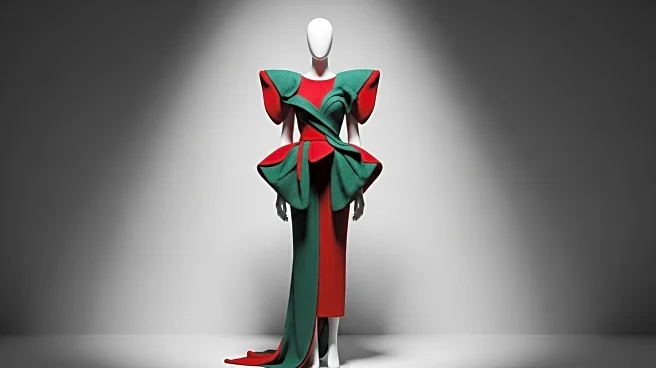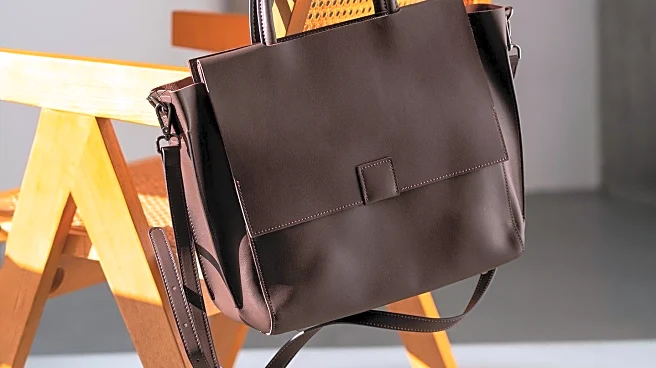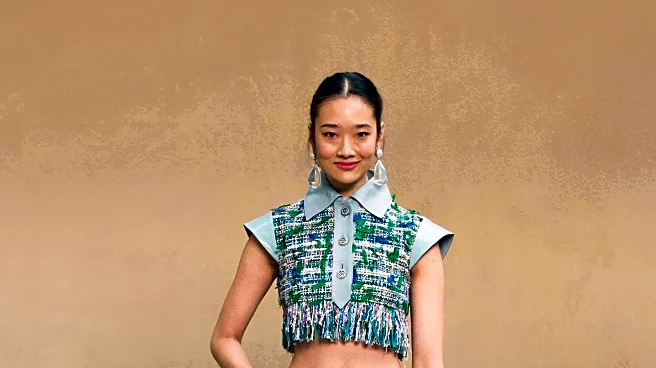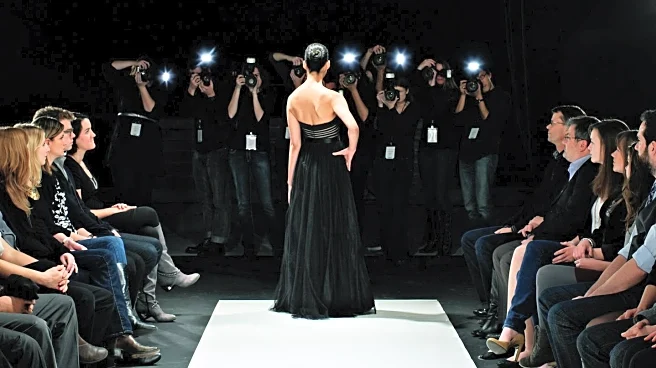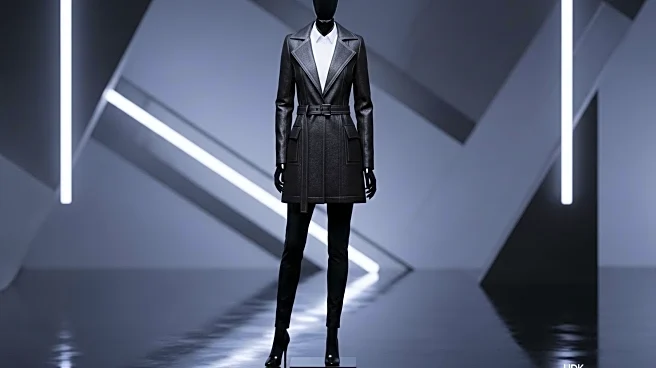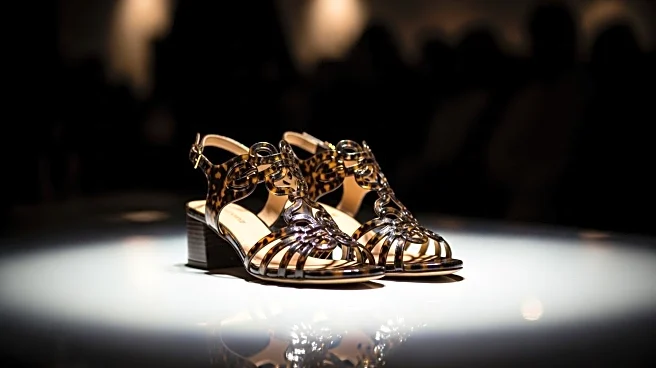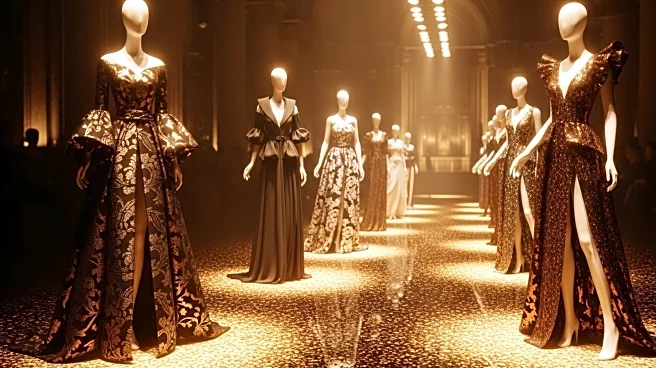What's Happening?
Vetements' Spring 2026 Ready-to-Wear collection, showcased in Paris, drew inspiration from Martin Margiela, featuring masks and provocative designs. The show, led by Guram Gvasalia, included 'no swastika' T-shirts inspired by graffiti near Vetements' Swiss headquarters. The collection featured open-back designs, denim-front and plastic-back jeans, and butt-exposing looks, blending elements of lingerie and iconic dresses. Despite the creative nods, the show faced challenges with visibility due to strobe lights, causing models to stumble. The collection also included high-tech elements like privacy collars and leather garments, reflecting a mix of controversial and innovative ideas.
Why It's Important?
The Vetements show underscores the ongoing influence of Martin Margiela in contemporary fashion, highlighting the brand's commitment to pushing boundaries. The provocative designs and controversial themes reflect the fashion industry's trend towards bold statements and social commentary. This approach can impact consumer perceptions and drive discussions on fashion's role in addressing societal issues. The collection's innovative elements, such as privacy collars and high-tech fabrics, demonstrate the industry's focus on blending fashion with functionality, potentially influencing future design trends and consumer preferences.
What's Next?
The reception of Vetements' collection may prompt discussions within the fashion community regarding the balance between creativity and controversy. Stakeholders, including designers and fashion critics, might evaluate the impact of provocative themes on brand image and consumer engagement. The collection's innovative elements could inspire other designers to explore similar high-tech and functional designs, potentially shaping future fashion trends. Additionally, the brand's approach to addressing societal issues through fashion may influence other designers to incorporate social commentary into their collections.
Beyond the Headlines
The Vetements show raises ethical questions about the use of controversial symbols and themes in fashion. The inclusion of 'no swastika' T-shirts, while intended as a protest, highlights the delicate balance between making a statement and provoking controversy. This aspect of the collection may lead to broader discussions on the responsibilities of fashion brands in addressing sensitive topics. Furthermore, the show's focus on privacy and functionality reflects a growing consumer demand for designs that offer both style and practicality, potentially influencing long-term shifts in fashion design priorities.

